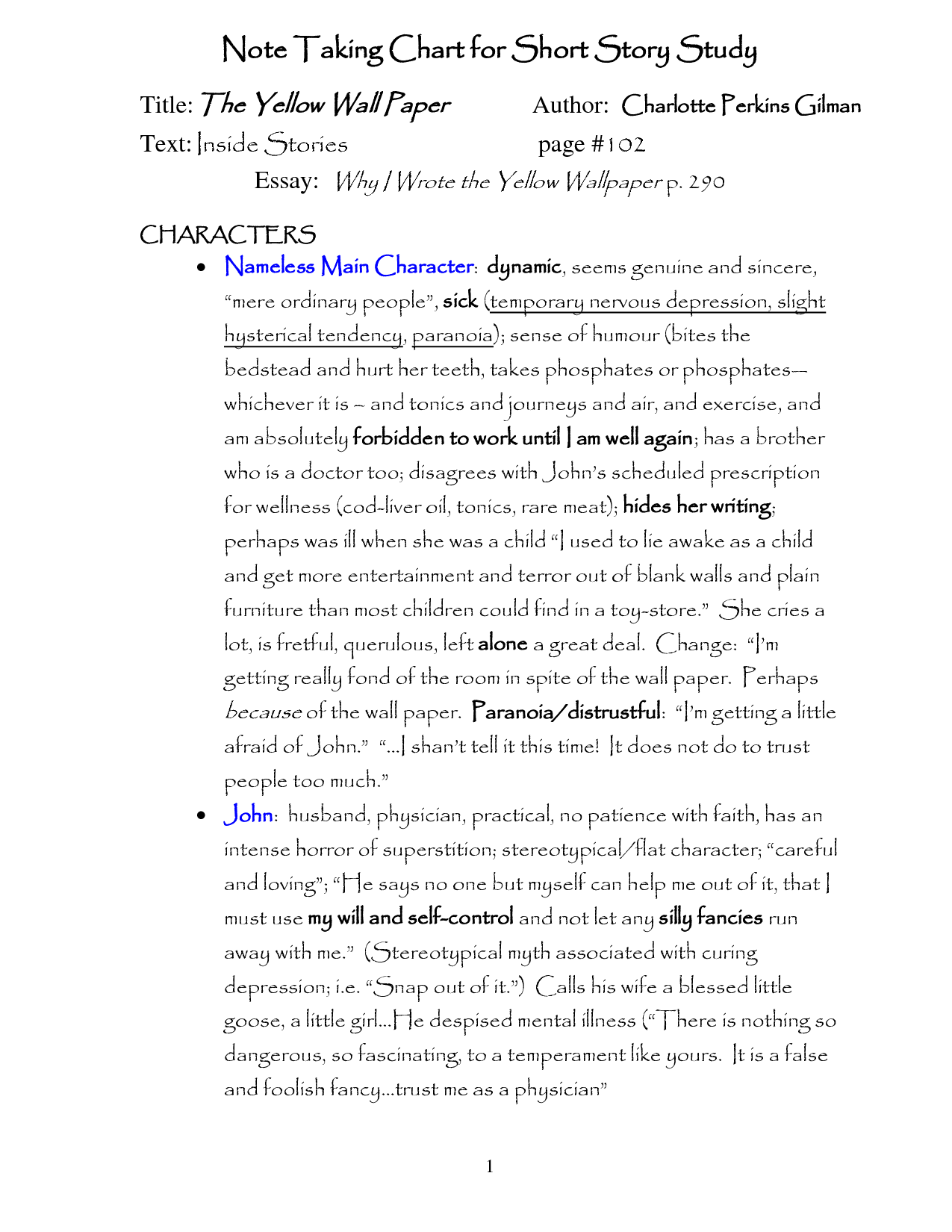


Similar to the narrator’s experiences, a male doctor prescribed Gilman the rest treatment, which ended up doing more harm than good. Her experience with mental illness was also strongly affected by her gender.

She lived in a time when society was primarily male dominated and women had few rights. The fact that Charlotte Perkins Gilman lived in the 19th century has a lot of impact on her writing. Similar to the biographical method of criticism, gender criticism also focuses on the author’s background, specifically the aspects relating to his or her gender. In her explanation of why she wrote “The Yellow Wallpaper,” she explains that after being prescribed the rest cure, she “came so near the borderline of utter mental ruin that could see over.” She also explains that much of her reason for writing this short story was to try to save people from the fate she narrowly escaped and the same fate that the narrator of “The Yellow Wallpaper” ultimately fell victim to. Charlotte Perkins Gilman wrote this piece in 1892, shortly after her own similar bout of mental illness. The motivations behind the “The Yellow Wallpaper” become strikingly clear when the author’s background is revealed. In contrast with the deconstructionist style of criticism, which focuses on the text, biographical criticism focuses on the author of the piece and their experiences and motivations in order to understand a work of literature. Today these same connotations do not exist and therefore a deconstructionist would argue that the meaning of this text has changed. Back in the nineteenth century, the word nervous seems most frequently attributed to women as if it is an unavoidable characteristic of the female nature. One word whose meaning has changed since the writing of this piece is “nervous.” The author seems to use this word as meaning an affliction or illness.

While formalists argue that there is one true meaning that can be derived from the formal qualities of the text, deconstructionists argue that as time passes, the meanings of words change and thus the meaning of the text also changes. The reader gets very little information about other characters and there is an intense focus on the narrator and the inner workings of her mind as her mental state steadily declines. The result of this diary-like construction makes the story seem almost autobiographical even though the narrator is a fictional character.īecause of this, everything is relayed in a very personal way and gives an in depth view of the narrator and her feelings. In order to better understand this story it is helpful to analyze it through the lenses of the seven schools of literary criticism which include, formalist, biographical, historical, reader-response, deconstructionist, psychological, and gender criticisms.įrom a formalist perspective, one of the most important things to note about this short story is how it is composed from the entries in the narrator’s secret journal, which she keeps hidden from her husband. The story is narrated through the journal entries of a woman who is confined to her bedroom in order to cure her “slight hysterical tendency.” Although this treatment was well intended by her physician husband, due to her isolation and lack of mental stimulation the woman’s mental state steadily deteriorates until the end of the story when she goes completely insane. “The Yellow Wallpaper” is a short story that was written by American author Charlotte Perkins Gilman and was published in 1892.


 0 kommentar(er)
0 kommentar(er)
